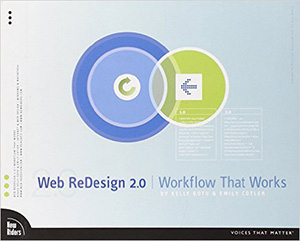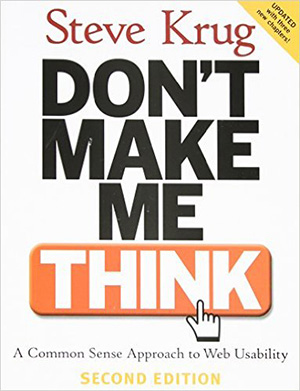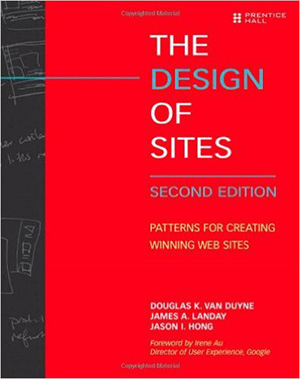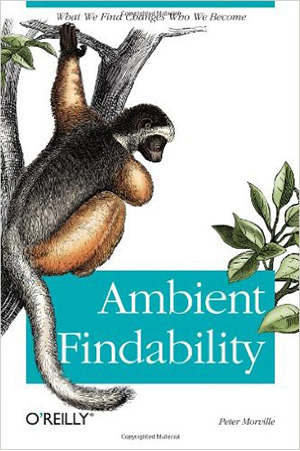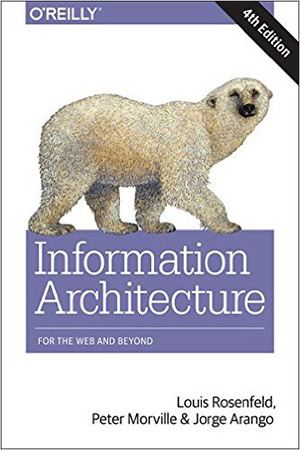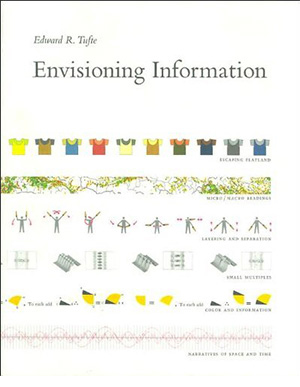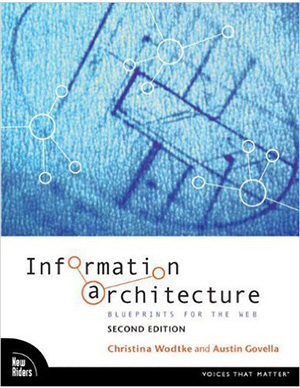
When thinking about either changing your information architecture that already exists or starting from scratch, it can seem a bit overwhelming when you are not sure where to start. The jargon, the seemingly lengthy process, it can seem daunting. This is a list of some of the best books available to aid in your journey to learn more about information architecture, no matter what your level of experience is.
This is considered one of the smartest, most practical guides that will show you how to plan, budget for, organize, and then manage your own website redesign. This guide will also help with a project that has not been made yet—all the way from conceptualization until launch. Written by a real web designer with a knowledgeable coauthor, they use their own experiences in the real world for a solid approach to the workflow of a website redesign. The book approaches the idea of a redesign knowing that it is not only about the priorities of a business, but also simply about good design. In the book, each chapter incorporates a case study that will explain each vital step of the process. Along with this illustration, there are a number of worksheets, checklists, and forms that will aid in putting your knowledge to use.
The easy to read format of the book is arranged in a way that outlines the Core Process—an intricate 5 step process—that can be adapted and tuned to fit any type of project. The first step is to define the core process. The second step is to develop the website structure. The third step is based on the visual design and testing. The fourth step incorporates the production and QA. The last step consists of the launch and everything beyond.
Those who are proponents of this book say that it can serve as the basis for how to break down the structure of a project and aid in developing the project sequencing. It is a high-level approach broken down into phases that will track all vital tasks, deliverables, and roles that should be organized in a way that will successfully develop, employ, and maintain a website. The book is about more than simply making a website be aesthetically pleasing, it dives into all of the most important topics of making a website functional from the inside. All of the most important topics are covered, but they are not dug too deep so that they become incoherent. All of these vital elements are organized in a way that makes sense when developing new information architecture or improving upon one that already exists. It is more than just skimming the top of the topics, it is exploring them in a way that anyone could understand, and is great for those who are not quite so technical.
First published in 2000, there have been thousands of web developers and web designers that have relied on this guide written by Steve Krug to aid them in understanding the principles regarding an intuitive navigation and information design. This book has been regarded as one of the highest recommended books about the subject. It is approaches the subject with wit but keeps it practical. The third edition examines the same principles as the previous editions but incorporates a newer chapter about mobile usability as well as updated examples on the tried and true rules. While it may seem that to make a book like this you would be creating a monstrous sized guide, the opposite is true in this case. The handbook is brief and illustrated guide incorporates all of the most important elements of web usability.
It is an essential companion for anyone that is designing and developing websites across the globe. Those who have already used this guide regard it as a book that should be required reading for anyone that is working on websites. The author is a usability consultant that has amassed over 20 years of experience as a user advocate for many well-known companies. The first edition of this book brought him much success and has made him one of the most sought-after speaker to educate on usability design.
It has been said that this book is great because it is based on empirical observation rather than exhaustive statistics. It is designed in a way to act as a guide that tells it how it is and strictly outlines the way that information architecture needs to be done so that you will have a successful website. It outlines how and why individuals use websites the way that they do, and lets you in on that secret so that your website can be designed to be easily used by the visitors. In the end, the book will also give you insight on how you can perform testing on your website without dishing out a lot of money, so that you can easily see just how much the guide has improved your own version of information architecture since the shift in technological design.
This book has been called the authoritative reference for all of the principles, patterns, methods, and best practices that are executed for successful web design. For those who are involved in the creation of dynamic websites. This guide presents all of the tools that are necessary as well as the techniques are used to put together an effortless web design that results in an improved level of customer satisfaction, a better end-user experience, and a balanced execution of website design.
Within the book, you will find a comprehensive tutorial that covers all foundations of great web design. After that, you will transition to discovering the 13 major pattern groups of web design. These major patterns will untangle design problems that keep occurring and will help those who are working on web design to stay away from reinventing the wheel, if you will. The patterns vary from creating a solidified navigational framework and home page, to ingraining trust and credibility with all of your customers as well as improving the performance of the site overall through the use of a better design.
Featured in the book is: coverage of the mobile web, AJAX, and online communities; 17 new design patterns added to the original 90—along with the newest blog site types; more than 150 images and 450 screenshots and diagrams for better visualization; vital site elements like style sheets, site maps, customer profiles, and dynamic elements; color coded sections for easy organization; and an overall balanced outlook on website design that looks for what is best regarding the customer and the business.
This guide is written by: Douglas K. van Duyne—he is a software designer and entrepreneur, the principal and cofounder of web design and research firm Naviscent. James A. Landay—a professor of computer science who has previously served in Seattle as the director of Intel Research. Jason I. Hong—a computer science professor at Carnegie Mellon University.
This books knows how intimidating it may be when you find yourself researching information architecture. It delivers a new approach to explore the intersection of information and connectivity. The author, Peter Morville, explores the idea of unlimited findability. He also discusses GIS, the internet, and more network technologies that are working cohesively to ensure unlimited findability. He ponders how the mixing of these innovative ideas affect society, since access to the internet is a requirement for all successful people and businesses. Before getting into this within the book, Morville ponders the way that humans have evolved, hinting that a fear of being lost may be what has driven us to the creation of the internet through maps and charts.
The central idea of the book is that information architecture, information literacy, and usability are all vital parts of the new age of technology. This works in conjunction with the thought that only through planning and designing the best software, internet, and devices, will humans be able to maintain this same level of connectivity in the years to come. The book shows this with illustrations done up in full color alongside other thorough examples.
You will not find hypothetical scenarios, rather real research that has been done and how it supports the ideas. Morville's book is said to take you on a ride that explore the idea of findability using creativity in ways that can be used immediately.
The 4th, and newest, edition of this book is more challenging and necessary than before. There is an oversupply of information available on the internet, so it is easy for consumers to be overwhelmed. Anything that you want your target audience to find should be findable, easy to navigate, and easy to understand. The experience that is provided must be familiar and coherent through various interaction channels (smartphones, web browsers, smart watches, etc.).
This book explores beyond what happens with pen and paper and computer screen, as it shows superior displays of complex data in many dimensions. This has been said to be Edward Tufte's most design-oriented book. Within, you will see an array of maps, charts, diagrams, scientific presentations, statistical graphs, computer interfaces, tables, timetables, guidebooks, and so much more. Within it, you will receive practical advice regarding how to explain complex ideas using visual means. Some of the topics included are: layering and separation, narratives, color and information, escaping flatland, small multiples, and micro/macro designs. The book has been given 17 awards for design and content, as it contains about 400 illustrations comprised of 6 to 12 colors.
This is said to be Tufte's best book—it has won individuals over by providing examples of some of the best designs as well as some of the worst. The book can be used by anyone who is a web page designer, user interface designer, cartographer, statistician, scientist, or really anyone that needs to have the ability to present a plethora of information in a way that is clear and understandable.
Published for the first time 10 years ago, this book has become a staple for those who are invested in web and interaction designing, as it has grown to distinguish the main principles of the practice. The newest version of this book is expanded, updated, and is in full color. The refined edition goes way beyond information architecture for a desktop computer, as it includes information that can be applied to the sudden influx of mobile devices and applications too.
This book explains how a successful interactive design needs more than just perfect code and neat graphics. It is about fully incorporating all strategic objectives while you still meet the needs of your users. You can have the best content and the most up to date technology, but they will not help you balance your goals without ensuring a cohesive and consistent user experience.
The issues of information architecture, brand identity, usability, and interaction design are all involved with creating the user experience but can become complex and overwhelming. This latest edition of the title will slice through the intricacy of the issues using concise explanations and clear illustrations that stress the ideas rather than techniques or tools. Readers will see the bigger picture regarding the development of user experience—including the process from strategy and requirements all the way to the information architecture and the visual design.
Learn about websites and their information architecture, and how it comes to be. It can be manually designed or whatever the default it. They can be compared to buildings and their architecture—from tiny shacks to million dollar skyscrapers. Many websites actually fall on the shack end of that spectrum. This is because so many websites simply threw together their websites when the internet boom began. Now is the time of rebuilding websites, and this is the time to do it right.
This guide presents the most important concepts of information architecture—designing the web site interaction so that it is easy to use, organizing the web site's content so that it can be easily found, and putting together an interface that is easy to understand. This book helps designers, programmers, project managers, and others involved with information architecture so that they are able to avoid making the costly mistakes that were done in the past. This is possible because the guide teaches important skills used in information architecture through clear and concise explanation. When you utilize this book when creating your own information architecture on your website, you will almost certainly pass any usability test with no problems at all.
The illustrations that are used to make all of the most important points might seem a bit childish, but all of the concepts that are explained are done so in a way that can be clearly understood, as it is explained in a way that is not too technical or filled with jargon. Those who have had success using this book state that it is possible to read it from cover to cover, but others will use it simply as a reference guide. It is strongly recommended to anyone that is either putting together their information architecture for the first time, or for those who are going through the process of restructuring their website.
This text is regarded as a must-read for anyone that considers themselves a web designer, as it holds important information about how to use information architecture when creating an intelligent website design that produces the sales that are needed for a successful business. The web market today is quite different than it once was, and business returns that can be measured are what is important to clients, and this book will help designers to arm themselves with the tools that it takes to make the conversion possible.
In this guide, there is less emphasis put on the theory and more emphasis is put on actually putting it to use. There are practical examples as well as how-tos, templates that are ready to use, do's and don'ts, illustrated concepts, tools, and deliverables that are ready to be used by anyone that is involved with designing a website. Readers are given practical explanations and tips that are illustrated through case studies from those who are leaders in the industry, associated with companies like Microsoft and IBM. Readers will also benefit from clear explanations regarding the most important research done by the academics of this world. Readers will also have access to the website, in which the templates that are explained in the book are available for use, as well as a complementary chapter and free access to more template samples.
The author Peter van Dijck received his teaching degree for arts in Belgium, along with a Master's in photography and another master's in Ethnography. He worked as the senior information architect & interface designer for many large corporate websites.
Paper Prototyping: The Fast and Easy Way to Design and Refine User Interfaces (Interactive Technologies)
If you are someone that spends a lot of time in your design process wondering what it is that your target users need, or take part in the endless back and forth of discussing how the interface should work? Have you had an initial design that only ended up being totally redesigned? This guide can help.
This book was written by someone who is a usability engineer that has an extensive career in paper prototyping. The book is practical, and is written as a how-to guide that will get you ready to create and then test paper prototypes of many different types of user interfaces. You will learn how to create many kinds of interface elements as well as interactions. You will learn all about the practical facets of paper prototyping. This includes scheduling activities, deciding which technique to use at certain times, and handling the doubt in others about your brand. There are many case studies and images that are featured through the book that will show real world examples of how paper prototyping has worked successfully.
This powerful technique will show you how to develop products that are more intuitive, efficient, useful, and pleasing. You will be saving time and money by solving frequent problems before they even happen. You will be able to receive user feedback early and then implement it to help in the design process. Communicate better by involving the whole team. And be more creative, by experimenting with a number of ideas before being tied down to one. Designers can solve many common problems before any implementation has been done.
This can be called the standard book about charts, tables, and statistical graphics. There are 250 of the best and worst statistical graphics incorporate a detailed analysis of how you should be displaying the data in a way that is precise, effective, and efficient. You will see the benefits of high-resolution displays as well as small multiples. You will learn how to edit and improve your graphics and learn about aesthetics and data's graphical displays. The newest edition of this book is filled with color renderings of graphics, adds color to previously monochromatic graphics, and includes every correction and changes that were done through the 17 printings of the first edition.
Those who use this book say that what they like most about it is the research that has gone in to making sure that it stay relevant without going in to too much detail that may go over the heads of some. It is important to show not only the best examples of what a website's information architecture should look like, but also what bad information architecture will look like and explain why it is bad. It is vital to know why some features would make something good or bad.
Not only does the new edition incorporate all of the revisions that were made through the 17 designs of the first edition, it has been updated with the latest new information about the way that technology has evolved.
Related Articles
- 18 Usability Guidelines and Website Design Standards
- UX Tools
- Focus Groups: Everything You Need to Know
- How to Perform a Usability Evaluation
- Top 15 User Experience (UX) Certification Programs
- The Definitive Guide to Card Sorting
- 10 Card Sorting Tools for Surveying Information Architecture (IA)
- 43 Awesome Ultraprecise, Proven AB Testing Tools
- 5 Tips for Creating an Exceptional Website
- 16 Usability Testing Tools for Optimizing User Experience
- 20 Ways To Increase Your Website Conversions
- How to Evaluate the Quality of Your Website Design
- UX Careers 101: The Guide to User Experience Careers
- How to Effectively Plan Your Website's Architecture
- Sitemap Generator + Google Analytics = A User Experience Architect's Dream
Create Visual Sitemaps
Create, edit, customize, and share visual sitemaps integrated with Google Analytics for easy discovery, planning, and collaboration.
Popular Tags
Search Engine Optimization SEO Accessibility Testing Create Sitemaps Sitemaps UX User Experience Sitemap Generator Content Audit Visual Sitemap GeneratorGet Started with DYNO Mapper
Join thousands of professionals using the most advanced visual sitemap tool to simplify discovery, IA, and content planning.
👉 Start Your Free Trial — No credit card required.


